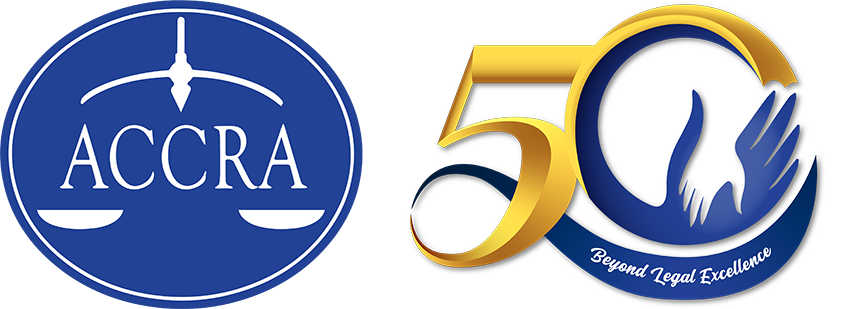Imagine reclining on your couch, basking in the glow of a recently sold property that brought in substantial income – only to be blindsided by an unexpected tax levy for failure to pay taxes on income you were unaware required reporting. Can the party imposing this levy assert that ignorance of the law excuses no one and proceed to seize your assets for unpaid taxes? The answer, unequivocally, lies within the confines of the Constitution.
Section 1, Article III of the Bill of Rights of the 1987 Constitution explicitly decrees: “No person shall be deprived of life, liberty, or property without due process of law.” This constitutional safeguard ensures that taxpayers cannot lose their property – be it real estate or personal assets – due to tax delinquencies without being duly notified of associated tax assessments.
In Commissioner of Internal Revenue vs. Villanueva (G.R. No. 249540, 28 February 2024), the Supreme Court discussed the proper method of serving notice of assessments to taxpayers. Particular emphasis was placed on Section 228 of the National Internal Revenue Code (“NIRC”), which mandates that taxpayers must receive written notification of both the legal basis and factual grounds for assessments; failure to do so renders the assessment null and void. How, then, are these assessments communicated to taxpayers? The Supreme Court referenced Section 3 of Revenue Regulation No. 12-99 (“RR 12-99”), granting the Commissioner of Internal Revenue (“CIR”) the authority to serve assessment notices either in person or via registered mail. On 28 November 2013, RR 12-99 was partially amended by Revenue Regulation 18-2013 (“RR 18-2013”), delineating the different modes of serving notices of assessment.
Modes of Service of PAN/FAN/FLD/FDDA
In RR 18-2013, BIR enumerated the acceptable modes of service for Preliminary Assessment Notices (“PAN”), Final Assessment Notices (“FAN”), Final Letters of Demand (“FLD”), and Final Decisions on Disputed Assessments (“FDDA”). Initially, personal delivery is preferred, where a copy is delivered directly to the party at their registered or known address or any other location where they can be found. If personal service proves impractical, substituted service becomes an option. In such cases, the notice may be left at the party’s registered address or with an authorized individual. Substituted service is also feasible at the taxpayer’s residence or place of business, provided a person of legal age is available to receive the notice.
If the party cannot be located at their registered or known address, revenue officers, accompanied by a barangay official and two disinterested witnesses, will attest to the party’s absence. Similarly, if the party can be found at his registered or known address but refuses to accept the notice, the presence of a barangay official and two disinterested witnesses is necessary to confirm the refusal. In both instances, the notice is then handed over to the barangay official.
Alternatively, service by mail is permissible, either via registered mail to the registered or known address with instructions for return if undelivered or through reputable courier services. In cases where no such services are available, ordinary mail suffices. The server must document the manner, place, and date of service, as well as the recipient’s information, and submit a sworn report before a Notary Public or another authorized individual. Service to a taxpayer’s appointed tax agent or practitioner, as prescribed by relevant regulations, is deemed service to the taxpayer.
Effect of a Taxpayer’s denial of receiving the notice of assessment
In Barcelon, Roxas Securities, Inc. v. Commissioner of Internal Revenue (G. R. No. 157064 August 7, 2006), the Supreme Court explained that if a taxpayer denies receipt of an assessment notice from the Bureau of Internal Revenue (“BIR”), it falls upon the BIR to substantiate delivery to the taxpayer or the latter’s authorized representative. At this juncture, the burden of proof shifts to the BIR, necessitating them to provide contrary evidence demonstrating that the taxpayer indeed received the assessment. To fulfill this burden, the BIR must furnish independent evidence confirming the receipt of the notice of assessment. Previous pronouncements of the Supreme Court have underscored that a mere BIR record book containing the taxpayer’s name, type of tax assessed, and registry receipt number, or self-serving documentation made by the BIR personnel, especially if they are unsupported by substantial evidence, are insufficient to establish actual receipt of the notice.
Effect of mere presentation of registry receipts to the notice requirement for tax assessments
In Commissioner of Internal Revenue vs. T Shuttle Services, Inc., (G.R. No. 240729, 24 August 2020), the Supreme Court emphatically held that the mere submission of registry receipts, devoid of any authentication or identification, falls short of meeting the requisite standard to satisfy the notice obligation owed to the taxpayer. Consequently, such a presentation is deemed insufficient to conclusively establish the actual receipt of the notice of assessment by the taxpayer. This underscores the necessity for stronger evidence to prove the receipt of tax assessment notices – due process being a constitutional requirement from which such notice requirement stems.
What, then, qualifies as sufficient proof of a taxpayer's receipt of notice of tax assessments?
In Villanueva, the Supreme Court emphasized that to sufficiently prove the receipt of notice of tax assessments, there must be substantial evidence that either the taxpayer or their duly authorized representative actually received the notice of assessment. Elaborating on this point, the Supreme Court explained that the BIR must present independent evidence, such as the registry receipt issued by the Bureau of Posts or the registry return card, which should be signed by the taxpayer or the latter’s authorized representative, indicating that the assessment notice was released, mailed, or sent to the taxpayer. If such a document cannot be located, the BIR may submit a certification issued by the Bureau of Posts and other pertinent documents executed with the latter’s intervention.
This stringent criterion serves as a safeguard to ensure compliance with the constitutional mandate of due process, which demands that taxpayers be fully informed of the rationale behind any tax assessments imposed upon them. By requiring such tangible proof, the Court ensures that taxpayers are not only made aware of their fiscal obligations but also provided with an opportunity to engage with the assessment process in a meaningful manner.
In adherence to these legal principles, taxation authorities must meticulously adhere to the prescribed protocols for serving notices of tax assessments. While the lifeblood doctrine serves as the overarching foundation for taxation, encompassing the imposition and collection of taxes, it should also be accompanied by rigorous adherence to prescribed procedures due to the constitutional requirement of due process. Anything short of strict compliance with the prescribed procedure for taxation would result in nullifying tax assessments, as repeatedly held by the Supreme Court.
So, next time you find yourself leisurely seated on your couch, only to stand abruptly at the thought of potential property levies due to tax concerns, pause and ponder: Did I even receive a notice of assessment? And if so, was it served correctly? If your answer to both questions is no, then sit back down and enjoy that couch!
This article is for informational and educational purposes only. It is not offered and does not constitute legal advice or legal opinion.
Evanne Grace M. Maliones is an Associate of the Angara Abello Concepcion Regala & Cruz Law Offices (ACCRALAW), Davao Branch.
[email protected]
(6382) 224-0996




